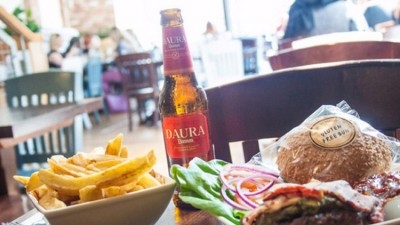Losses for Top 100 UK restaurant groups increase to £93m

New figures published by the firm reveal that the top 100 restaurants (calculated by turnover) made a loss of £93m in the last 12 months, down from a pre-tax profit of £37m this time last year.
It says restaurants have come under pressure from a combination of falling sales, rising wages, and an increased cost on imported goods caused by the ongoing fallout from 2016’s Brexit vote.
“The restaurant sector in the UK is still suffering from the sharp drop in profitability earlier this year,” says UHY Hacker Young partner Peter Kubik, referring to figures released by the firm earlier this year that revealed nearly half of the of the UK’s Top 100 restaurant groups are now loss making.
Several major restaurant groups have closed loss-making sites in recent months in order to restructure debts including Hawksmoor, which announced the closure of its two remaining Foxlow restaurants in June 2019; and Boparan subsidiary Giraffe Concepts Ltd, which announced in March that it would close 27 of its Giraffe and Ed’s Easy Diner restaurant sites, affecting 340 jobs.
UHY Hacker Young adds the growing popularity of home delivery services has come as a mixed blessing for restaurants.
While these services provide an additional channel for sales, for some restaurants they have come at the cost of a fall in more profitable in-person visits, with fewer alcohol sales.
In order to meet upcoming financial obligations, some restaurant groups have been forced to try and raise capital from shareholders, although Kubik notes that this is easier said than done
“There are now few restaurant chains that aren’t either considering a strategic restructuring or a reduction of their branch networks,” he says.
“Restaurants are also taking action at a micro level such as simplifying their menus to reduce waste, cut costs and focus on their most popular dishes.
“Restaurant owners can also look to extend credit terms with their suppliers where possible – this can help to improve cash flow.
“However, despite all the bad news there is still opportunity in the market for restaurants that can meet a clear consumer demand. There are plenty of big success stories in the market – it’s just more challenging than ever to maintain success as tastes and budgets change.”





















